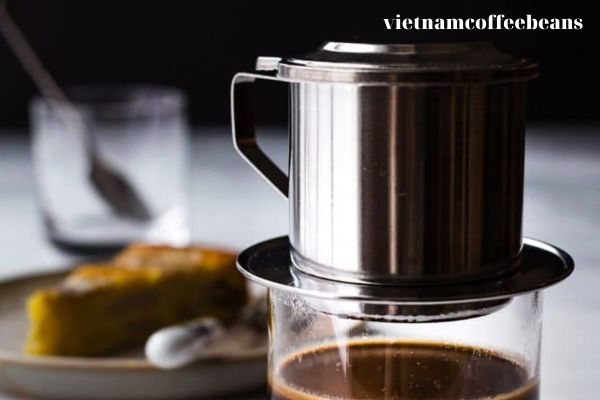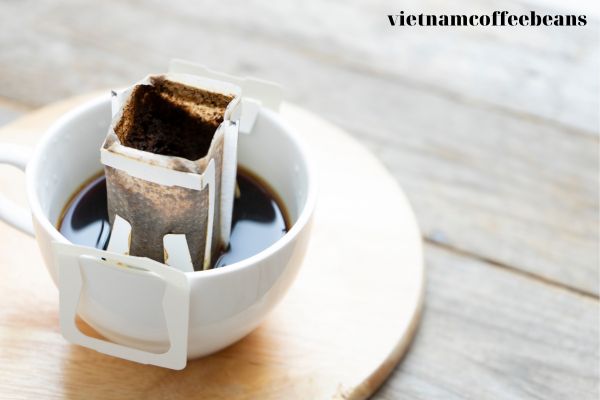I love the smell of freshly Turkish coffee brew—the sweet, smoky aroma that fills the room as it slowly simmers over the fire. But if you’ve never made Turkish coffee before, it can be a bit intimidating.
Turkish coffee is similar to Vietnamese phin coffee in that both methods use very fine grounds and do not filter the coffee.
With its unique brewing method and specialty ingredients, it can be difficult to know where to start. That’s why I’m here to provide you with my guide to brewing the perfect cup of this coffee.
In this guide, I’ll walk you through all the steps of the process, from gathering the necessary supplies to serving and enjoying the finished product. With my help, you’ll be able to make a delicious and flavorful cup of coffee that’s sure to impress.
Key Takeaways
- Turkish coffee is a rich and aromatic beverage with cultural importance, originating in the Ottoman Empire in the 16th century.
- Achieving the perfect foam in Turkish coffee requires attention to heat control and a slow infusion process.
- Serving tips for Turkish coffee include having a glass of water on the side, savoring the coffee slowly, and appreciating the craftsmanship involved.
- Turkish coffee holds cultural significance and is passed down through generations, preserving its authenticity and cherished for its unique flavor and velvety texture.
What is Turkish coffee?
Turkish coffee is a unique brewing style that produces different results and its authenticity lies in personal preference. This rich and aromatic beverage has a long history and holds significant cultural importance.
Dating back to the Ottoman Empire, Turkish coffee was first introduced in the 16th century and quickly became a beloved tradition. It was not just a drink, but a social and cultural experience, often served during special occasions or to welcome guests.
The Turkish coffee ratio of coffee to water is more concentrated than most other brewing methods. According to Java Presse, most Turkish coffees use a 1:9 ratio instead of the typical 1:16 ratio used in other brewing methods, making it much more caffeinated than your average cup of joe.
The brewing process and serving rituals are deeply rooted in Turkish culture, creating a sense of connection and tradition. The art of Turkish coffee has been passed down through generations, each adding their own touch and style to the preparation.
Today, Turkish coffee continues to be cherished for its unique flavor, velvety texture, and the special moments it brings to our lives.
What You’ll Need to make Turkish Coffee

To make Turkish coffee, you’ll need traditional equipment such as an ibrik and finely ground coffee, but if you’re looking to try something different, consider learning how to make coffee with a Chemex, as it offers a unique brewing method that yields a smooth and flavorful cup of joe.
You’ll need just a few simple items to make a delicious cup of this coffee – a pot, spoon, and coffee! Brewing equipment can vary slightly as you can use a traditional cezve or a modern electric coffee maker.
It’s important to choose the right grind size for Turkish coffee, so if you’re using a traditional grind you’ll want to make sure it’s quite fine. If you’re using preground coffee, select the ‘espresso’ or ‘Turkish’ grind setting. The finer the grind, the better the flavor of your coffee.
With all the equipment in place, you’re now ready to prepare the coffee.
Preparing the Turkish Coffee

To make the perfect cup, you’ve got to get the preparation just right – it’s the key to a delicious brew. Grinding the beans is the first step to take and is essential to a quality cup of this coffee. It’s important to grind the beans finely, just until they are powdery, to ensure the coffee is rich and aromatic.
The second part of preparation is heating the water. It’s important to bring the water to a simmer, but not a full boil, as boiling water will make the coffee too bitter. The ideal temperature for the water is between 90 and 95 degrees Celsius. This temperature will make sure the full flavor of the coffee is extracted.
Once the beans are ground and the water is heated, all that remains is to combine them and stir. This helps to evenly distribute the flavor throughout the coffee while also allowing for the grounds to settle.
However, if you are looking for a smoother and less acidic alternative to Turkish coffee, you might want to try the benefits of toddy cold brew system.
With the correct temperature and stirring, you’ll be able to enjoy a rich and aromatic cup of this coffee. With the preparation complete, it’s time to move onto the next step: heating and stirring.
Heating and Stirring
Once the beans are ground and the water is heated, all that’s left is to combine them and give them a good stir – the key to a flavorful cup. To start, you’ll need to add sugar to the cezve – the long-handled pot used to brew Turkish coffee.
Generally, the amount of sugar added depends on preference, but it’s important to stir the sugar evenly into the water before adding the coffee grounds. Once the sugar has been mixed in, add the coffee grounds and give the mixture another stir.
There are various stirring techniques to choose from, ranging from gentle and light stirs all the way to vigorous and vigorous stirs. The goal is to create a homogenous mixture that won’t settle at the bottom of the pot.
With the heating and stirring complete, it’s time to move onto the next step – serving and enjoying the coffee.
Serving and Enjoying

Enjoying a freshly brewed cup of this coffee is like savoring a flavor symphony – the perfect way to start or end your day. But there is much more to the experience than merely brewing the coffee. In many cultures, Turkish coffee comes with its own set of social etiquette and a unique cultural context.
It’s important to know the proper way to serve and accept this coffee to share the full experience with friends and family. With the right knowledge, the pleasure of Turkish coffee can be shared with everyone around you.
In many cultures, Turkish coffee is served in small cups with a plate to catch any grounds that settle. It should be served with a small glass of water to help cleanse the palate before and after each cup.
The host should be the one to pour the coffee, and it should be served to each guest in the order of their age and seniority. It’s also important to leave a bit of coffee at the bottom of the cup, as this is considered to be a sign of respect.
If you are looking for a simpler and more convenient way to make coffee, you might want to try the melitta coffee brewing tips.
From the brewing process to the social etiquette of serving, Turkish coffee is a unique experience that can be shared and enjoyed with others. From here, we’ll move on to troubleshooting tips.
Troubleshooting Tips
Having trouble with Turkish coffee? Don’t worry, we’ve got all the tips and tricks you need to get it just right! The key to perfect Turkish coffee is to keep an eye on the details, as even the slightest shift in temperature or stirring can make a huge difference in the flavor.
Here are a few troubleshooting tips for avoiding the common pitfalls of Turkish coffee brewing:
- Be careful not to over-extract the grounds, as this can lead to a bitter taste. Over-extraction can occur if you have used too much heat or allowed the grounds to steep for too long. To avoid this, make sure to keep the heat low and stir consistently.
- If you have used too much heat or allowed the grounds to steep for too long, you may also find that the grounds have become clumped together. To avoid this, make sure to use a light stirring motion to evenly distribute the grounds as they are added to the pan.
- If your coffee is too weak, you may need to adjust the ratio of grounds to water. Start by adding an extra teaspoon of grounds for each cup of water you use. You can also add more water or adjust the temperature of the heat to achieve the desired strength.
Frequently Asked Questions
Conclusion
Wrapping up, Turkish coffee is a unique and enjoyable way to brew and enjoy coffee. With a few simple steps and the right tools, it’s easy to make a strong, flavorful cup. As you practice, you’ll find that the ratio of water to coffee, the stirring technique, and the amount of time you let the coffee settle all affect the flavor.
A good Turkish coffee brew is not complete without a thick layer of foam on top. The foam helps to trap the aroma and flavor of the coffee beans, and adds a smooth texture to the drink. To enjoy your Turkish coffee, you will need a special coffee cup called a fincan, which is smaller and thinner than a regular coffee cup.
You will also need a small coffee pot called a cezve, which has a long handle and a spout for pouring. To make the perfect brew, you will need finely ground coffee beans, water, sugar (optional), and a heat source. You can also serve your Turkish coffee with some Turkish delight, a sweet confection that complements the bitter taste of the coffee.
Experiencing the nuances of Turkish coffee is a great way to explore the different tastes of coffee. With a little patience and practice, you’ll be brewing perfect cups of Turkish coffee in no time.
Hope you get useful information from the article, if you have any questions or want to learn which coffee brewing method is right for you or read more articles about coffeebeans, please visit the website: vietnamcoffeebeans.com
Thank you!






